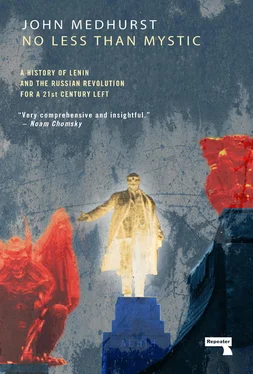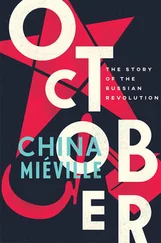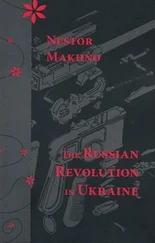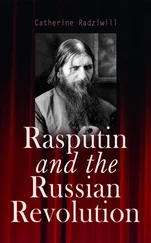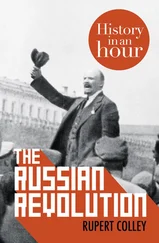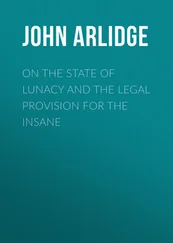The Left SRs had become a real threat to Sovnarcom. Unlike the mainstream SRs, they had joined the government and held some senior posts, even in the Cheka. They had mass support amongst the peasantry. They led the growing discontent with Brest-Litovsk. For a while it appeared they might form a working alliance with the Left Communists. Left SR leaders hoped that the Fifth All-Russian Congress of Soviets, due to meet on 4th July and at which they expected a majority of delegates, would constrain Sovnarcom and revoke Brest-Litovsk. Yet the Bolsheviks easily dominated the Congress. Alexander Rabinowitch found “substantial evidence that the huge Bolshevik majority in the congress was fabricated”. That majority was used ruthlessly. Trotsky asked for and received authority to shoot “on the spot” anyone who resisted the German occupation forces in Ukraine. Lenin suggested that if the Left SRs could not agree to the Congress’s decisions they should leave, but they should remember that “Socialists who abandon us at such a critical time […] are enemies of the people”. 5
With their backs against the wall Left SR leaders took a fatal decision. On 6th July, acting on the orders of their Central Committee, the Left SR Cheka officers Blumkin and Andreev assassinated the German Ambassador Count Mirbach in Moscow in the hope that this would re-ignite war with Germany and destroy Brest-Litovsk. Left SR detachments in Yaroslavl, where they dominated the local Cheka apparatus, launched a hastily prepared insurrection against the Bolshevik regime. They seem to have pre-empted what the Left SR CC actually desired, which was not to replace Sovnarcom but to shake it up and change its policy. Lenin had to send Red Army units to fight them precisely when they were needed to battle the Czech Legion in the south. At the same time the Germans threatened to invade and occupy Moscow in revenge for Mirbach. The only way to prevent this was for the Bolsheviks to demonstrate to the Germans that they were still fully in control by crushing those behind Mirbach’s assassination.
Although there was fierce fighting between Bolsheviks and Left SRs in Moscow and Yaroslavl, the outcome was never in doubt. The entire Left SR Party Congress, meeting at the time in ignorance of what its own CC had ordered, was arrested. Left SRs in Petrograd, who knew nothing of the CC’s decision to kill Mirbach and were stunned to hear of it, were nevertheless arrested and shut out of the Petrograd Soviet. Only Left SRs who repudiated their own CC could stand for re-election. In effect this meant hardly anybody. With the Mensheviks already banned from standing, the Soviets now officially became one-party organs. On 30th August, when Lenin himself was shot and nearly killed by Fanny Kaplan, a mentally unbalanced Left SR acting on her own, the Cheka ran wild. The SRs, Left and Right, were rounded up en masse . The political party that undoubtedly represented the majority of Russia’s people was now outlawed.
The Red Terror is not a fiction dreamt up by anti-Bolshevik propagandists. It was acknowledged, even celebrated, by Bolsheviks from Lenin and Trotsky to Bukharin and Victor Serge. Gordon Legget, in the authoritative The Cheka: Lenin’s Political Police , conservatively estimates that the extra-judicial, non-military executions carried out by the Cheka during the Civil War numbered approximately 140,000, although Figes considers that the total was “certainly several hundred thousand, if one includes all those in its camps and prisons as well as those who were executed or killed by the Cheka’s troops in the suppression of strikes and revolts”. 6
The full-scale terror began immediately after Lenin’s attempted assassination, of which the Bolshevik newspaper Krasnaya Gazeta wrote, “Each drop of Lenin’s blood must be paid for by the bourgeoisie and the Whites in hundreds of deaths. The interests of the revolution demand the physical extermination of the bourgeoisie. They have no pity. It is time for us to be pitiless”. 800 “counter-revolutionaries” already in custody in Petrograd were then summarily shot without trial and dumped in mass graves. It is impossible to determine if these were real counter-revolutionaries or were merely arrested because they had been members of the Kadets or SRs, or simply hostages of some kind.
For the Bolsheviks the distinction did not matter. In November 1918 the Cheka leader Latsis wrote to the local Cheka in Kazan,
Do not ask for incriminating evidence that the prisoner opposed the Soviet either by arms or by word. Your first duty is to ask him what class he belongs to, what were his origin, education and occupation. These questions should decide the fate of the prisoner. This is the meaning and essence of Red Terror. 7
Lenin himself called for the death penalty for a wide range of people including speculators, prostitutes, undisciplined or incompetent workers, as well as the “ruthless extermination of the Kulaks”.
Lenin had set the direction of policy before he was shot by Fanny Kaplan. On 9th August he issued an order in his capacity as Chairman of Sovnarcom which read, “It is necessary to organise an extra guard of well-chosen, trustworthy men. They must carry out a ruthless mass terror against the Kulaks, priests, and White Guards. All suspicious persons must be detained in a concentration camp outside the city”. On 11th August he followed this up with a cable to the Soviet of Nizhini Novgorod demanding it confiscate all surpluses of bread as well as suppressing rebellion in the area. “To accomplish this take from every area (do not take, but select by name) hostages from amongst the Kulak, the rich and oppressors of their neighbours, and charge them with the duty of gathering, delivering, and turning over to the authorities all surplus bread in the district”, the cable read. It concluded, “The hostages answer with their lives for the speedy and thorough execution of their task”. 8
On the same day, in response to reports of a Kulak uprising against the government in the Penza district, Lenin wrote a letter to “Comrades Kuraev, Bosh, Minkin, and other Penza Communists”, in which he demanded the rebellion be “mercilessly suppressed” and then went on to list exactly how he wanted this done. “1. Hang (hang without fail, so the people see ) no fewer than one hundred known Kulaks, rich men, bloodsuckers. 2. Publish their names. 3. Take from them all the grain. 4. Designate hostages–as per yesterday’s telegram”. He finished, “Do it such a way that for hundreds of versts around the people will see, tremble, know, shout: they are strangling and will strangle to death the bloodsucker Kulaks”. In case they had not fully understood he added a p.s.–“Find some truly hard men”. 9
After Lenin had advised the Penza communists on public hanging by truly hard men he took his thoughts to Sovnarcom. On 3rd September, 1918 he wrote to Sovnarcom Secretary N. Krestinsky that he wished to form a special five-man commission. He explained this was because “It is necessary secretly–and urgently –to prepare the terror. On Tuesday we will decide whether it will be through Sovnarcom or otherwise”. 10
Two days later Trotsky, as People’s Commissar for War, published a declaration stating:
The working class of Soviet Russia […] for every drop of proletarian blood it will shed torrents of blood of those who go against the revolution, against the Soviets and proletarian leaders. For every proletarian life it will seek to destroy the scions of bourgeois families and white guardists. From now on the working class declares to its enemies that every single act of white terror will be answered with a ruthless, proletarian mass terror.
People’s Commissar for Internal Affairs Petrovsky issued a decree titled “An order about hostages”, which mandated taking hostages “from bourgeois and officer ranks”. He added, “The slightest show of resistance or the slightest move made by white guardist circles should be met unreservedly by mass executions”. 11All over territory controlled by Sovnarcom Chekists carried out mass executions of people arrested on random sweeps of “bourgeois” areas or simply on hearsay.
Читать дальше
